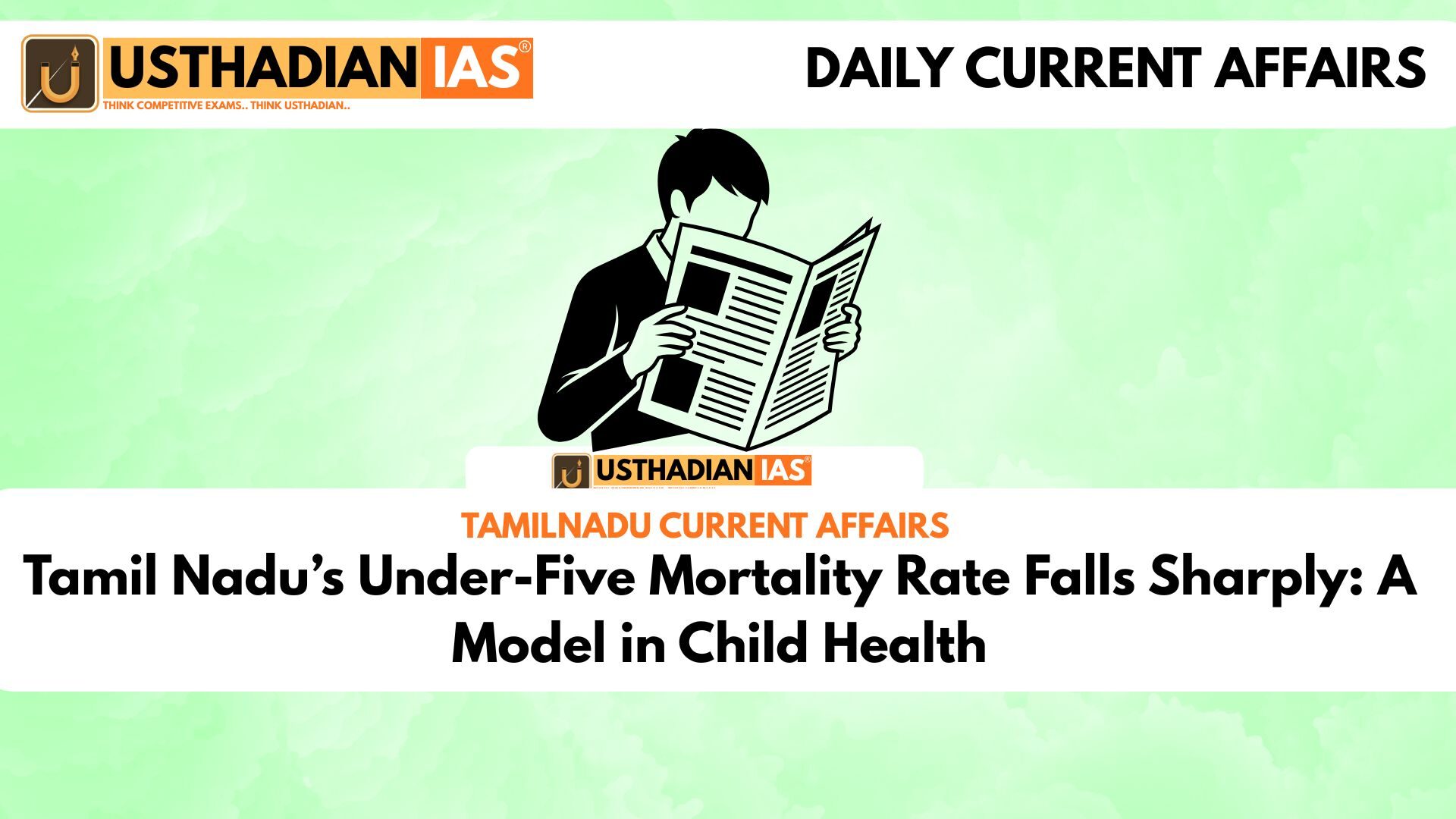A Remarkable Decline in Child Mortality
Tamil Nadu’s Under-Five Mortality Rate Falls Sharply: A Model in Child Health: Tamil Nadu has achieved a major milestone in public health — the under-five mortality rate has dropped from 10.9 per 1,000 live births in 2022-23 to just 8.2 in 2024-25. This sharp decline reflects the success of targeted state initiatives and consistent monitoring of child health. In simpler terms, fewer children under five are dying now compared to just a few years ago, and that’s a big win for both families and policymakers.
What is Under-Five Mortality Rate?
The under-five mortality rate is a basic but crucial health indicator. It tells us how many children under the age of five die for every 1,000 live births in a given year. The numerator includes the number of child deaths, and the denominator is the total number of live births. This ratio helps us understand how well a state or country is doing in areas like nutrition, vaccination, and healthcare access. A low rate usually indicates strong public health systems and better living conditions.
Tamil Nadu’s Efforts: A Nutrition-First Approach
A big reason behind Tamil Nadu’s progress is its Uttachathai Uruthi Sei initiative. This scheme focuses on identifying malnourished children early in anganwadi centres through regular visits by health teams. Once identified, these children receive additional care, nutrition, and follow-up, ensuring that intervention happens before things worsen. This proactive system is similar to having a school teacher constantly checking if any student is struggling and offering help right away — before the problem grows.
Role of ICDS and Community Support
Another pillar of Tamil Nadu’s child welfare strategy is the Integrated Child Development Services (ICDS). This central government scheme is being effectively implemented at the state level. Through anganwadis, children receive supplementary nutrition, basic health check-ups, and preschool education. These centres act as local health hubs, especially in rural areas. Mothers are educated about feeding practices and hygiene, and children are weighed and monitored regularly — simple yet powerful steps to build a healthy future.
Lessons for the Rest of India
Tamil Nadu’s success is not just a statistic — it’s a model for other states. It shows that with focused health interventions, ground-level outreach, and community involvement, big changes are possible. India still faces challenges in reducing child mortality in several states, but Tamil Nadu’s example offers hope. When backed by political will and consistent funding, health schemes can lead to real, measurable impact.
STATIC GK SNAPSHOT
| Indicator | Details |
| Under-5 Mortality Rate (2024–25) | 8.2 per 1,000 live births in Tamil Nadu |
| Previous Rate (2022–23) | 10.9 per 1,000 live births |
| Key Scheme | Uttachathai Uruthi Sei (Nutrition Identification) |
| Support Programme | ICDS (Integrated Child Development Services) |
| Centre Type | Anganwadi centres |
| Used For | Health check-ups, nutrition, early education |








